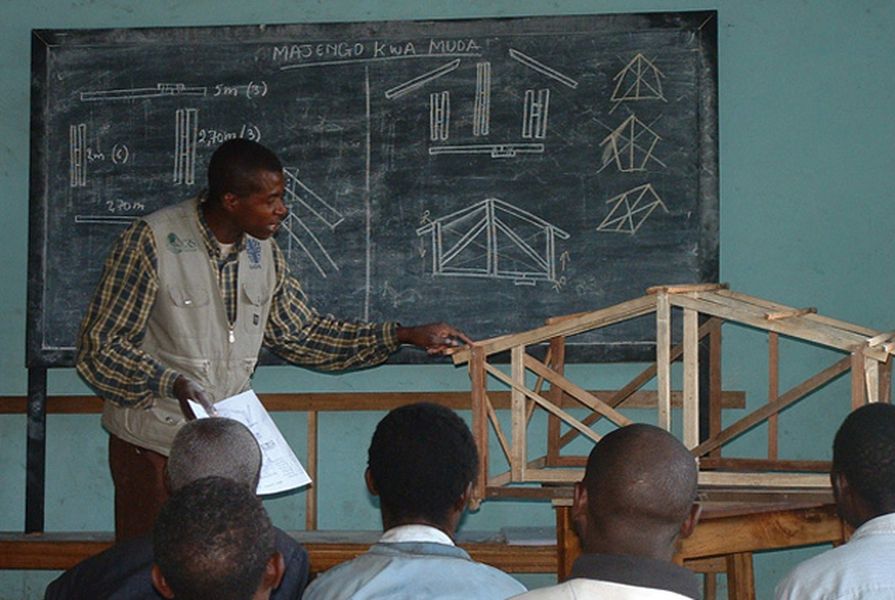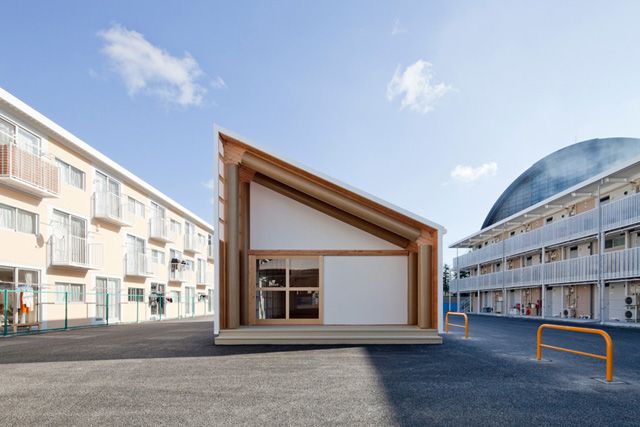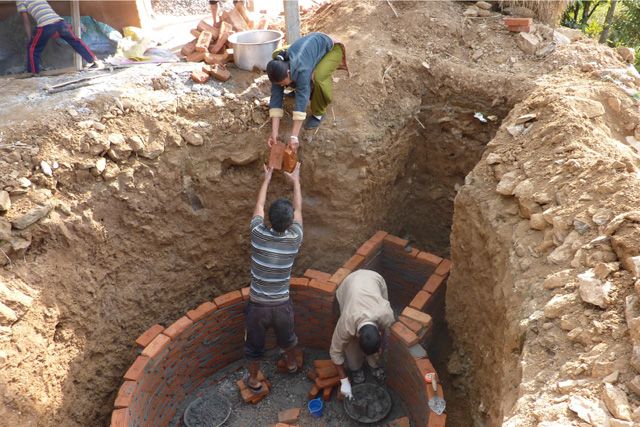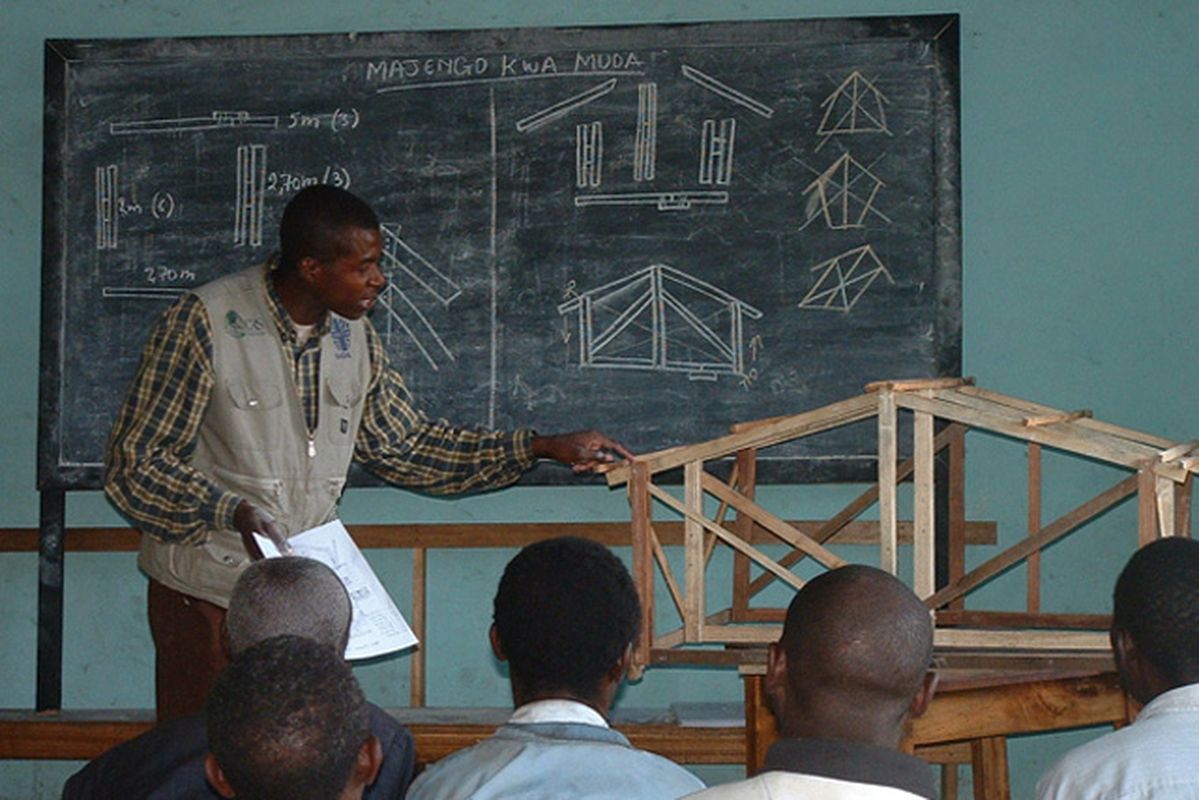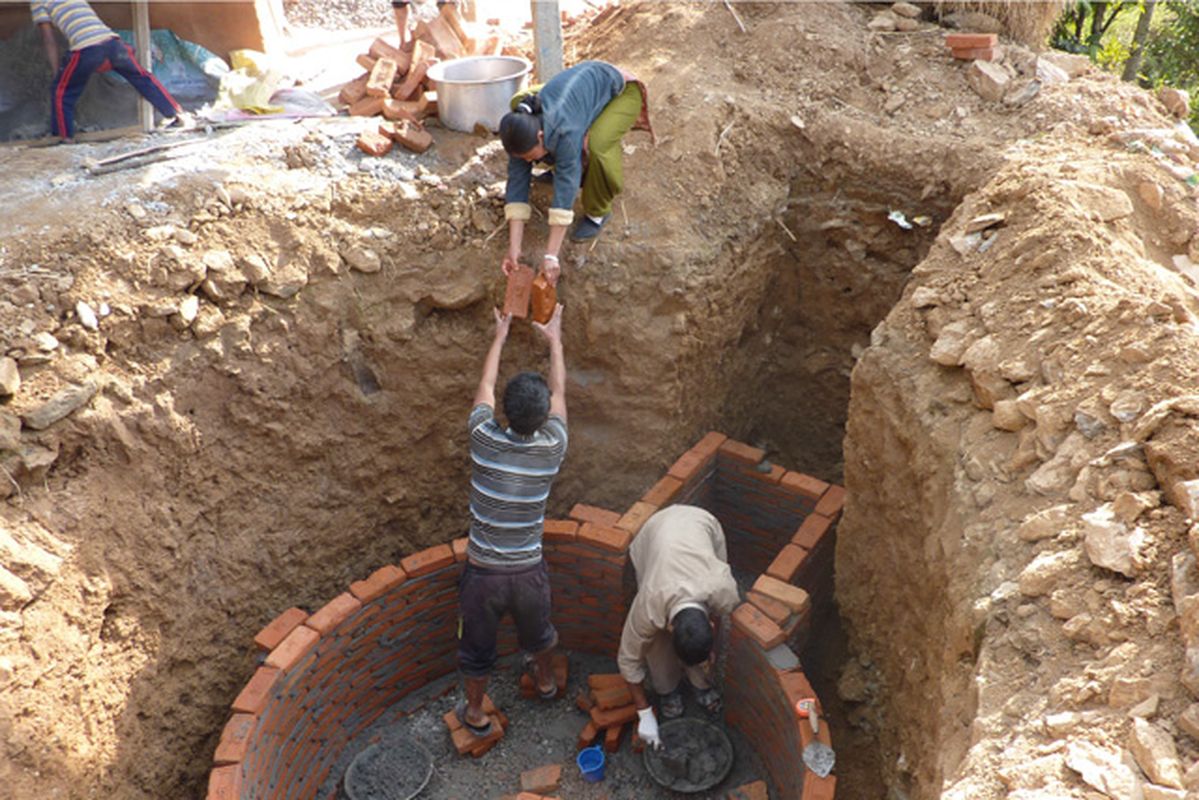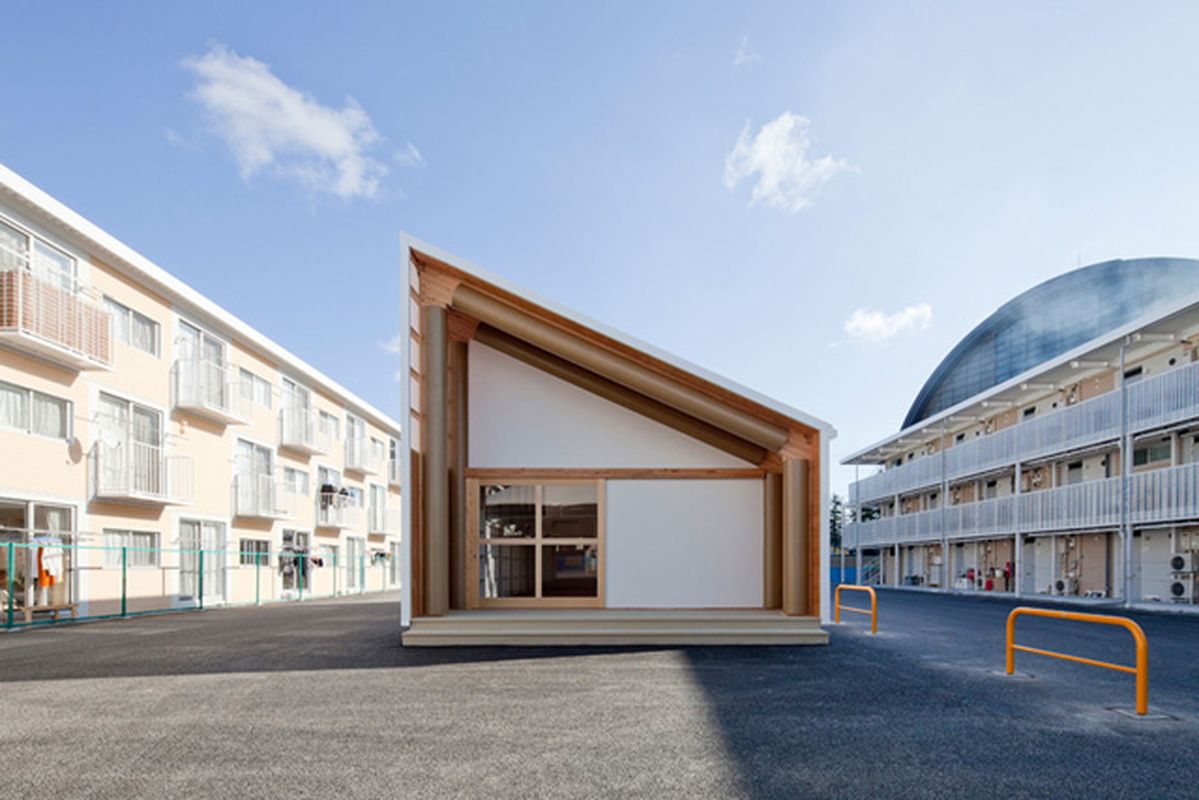“If you think about architecture as a methodology – independent of the outcome, as agnostic from its product – you would see that architecture has a deep culture of synthesis informed by civic values… If you have that capacity, that’s the most valuable capacity of this time in history.”1
Esther Charlesworth, Humanitarian Architecture (New York/Oxon: Routledge, 2014)
I like this line from Bruce Mau, it’s nice to be told that you have the “most valuable capacity of this time in history”, particularly by an outsider. It makes me optimistic about architecture, and gives hope that we can reclaim some public relevance going forward. But abstracting the methodology of architecture from its product is not as easy as it sounds. Over the past half-century, and probably longer, the profession of architecture has steadily retreated from its civic obligations. We’ve retreated to the relative safety of the avant garde, creating fanciful images of architectural speculation for the entertainment of our peers. We’ve retreated into icons, producing formal novelty in the service of marketing agendas and our own celebrity ambitions. And above all, we’ve retreated into commerce, where architecture is reduced to a service industry, fulfilling the market demands of property speculation and real estate.
In the good times, when the phone was ringing and money was coming through the door, we scarcely noticed what we’d lost. More troublingly, this professional service industry of architecture came to be mistaken for the discipline of architecture itself. It had built a fortress of self-justified legitimacy – fortified by an insular culture of institutes, accreditation, contracts and awards – and anything beyond these walls was ‘not really architecture’2. But architecture has always been more than that – it’s an inherently pluralist and diverse discipline, with sub-streams of activity in policy, activism, history, civics, strategy, community, ecology and more, all running in parallel. Indeed, we apparently have a “deep culture of synthesis informed by civic values”, if only we knew it ourselves…
With the bursting of the economic bubble, and the associated collapse of the real estate and construction sectors, this fortress of professional architecture instead became a kind of prison. The narrow definition of architecture that it once defended – as the source of singular edifices of rarefied detail and aesthetics – came to represent decadence and irrelevance in the eyes of the public. In the years since, the profession has been forced to expand its boundaries, searching for these “other ways of doing architecture”3 that had been so marginalised and dismissed. One of these ways is humanitarian architecture.
Atelier made with paper tubes and container shipping facades as part of Shigeru Ban Architects’ temporary container housing project in Onagawa, Japan
Image: Shigeru Ban Architects
Presented in this way, it’s easy to be cynical, to think that the recent bubbling of activity in the humanitarian field is mere opportunism; that architecture’s ethical pendulum is simply swinging back again, as it has done many times before. But there are two key reasons to believe that this time is different. The first is the crisis of employment. As Paul Nakazawa argues, graduates can no longer depend on a job, as “the foreseeable future only requires about half of the pre-recession workforce in architecture”4 . This fundamental restructuring will require the profession to seek out new terrains, and not just as a hobby. This first internal “crisis” seems trivial in light of the second: the savage effects of climate change. As Charlesworth cites in the introduction to Humanitarian Architecture, 42 million people were displaced by natural disasters in 2011, more than by wars and armed conflicts. This is an unfathomable challenge with immense spatial consequences, and one that architects urgently need to address.
But don’t confuse this plea with some sort of a moral obligation to the developing world, this is simply survival. Natural disasters do not discriminate between your world and “theirs”. Even the rich world is vulnerable in as yet unknown ways, as recent crises in Japan, the USA and Australia demonstrate. It is up to us to build environments that are resilient. We claim to be experts in problem-solving, lateral thinking, collaboration, operating at multiple scales, over long time spans, with technical skills and practical vision. Can we reconfigure our practice sufficiently in order to apply this capacity outside the safety of our professional fortress?
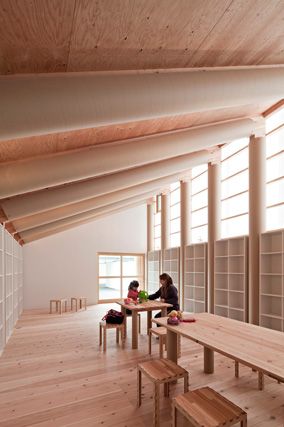
Interior of atelier in Shigeru Ban Architects’ temporary container housing project in Onagawa, Japan
Image: Shigeru Ban Architects’
The fifteen interviews in Humanitarian Architecture suggest that we can. Together, they present a picture of incredibly generous, selfless and inspiring work for the other 90 percent, demonstrating beyond doubt the urgent value and relevance of architects in humanitarian crises. The architects featured here have been instrumental in reconstruction and development efforts following the Indian Ocean tsunami in 2004, Hurricane Katrina in New Orleans in 2005, the flooding in Pakistan in 2010, the 2010 earthquake in Haiti, the 2011 earthquake and tsunami in Japan, the 2011 earthquake in New Zealand, as well as various other “slow-motion” human catastrophes, such as those in Palestine and North-Western Australia.
The contributions made to the lives of countless thousands of people over the past decade is surely confirmation enough of the positive role architects can play in the aftermath of a natural disaster. And yet, running at odds with these encouraging examples, is a recurring theme throughout this book: that architects are not prepared for the humanitarian sector, that we remain in thrall to the image, and hold unrealistic views of what work in a condition of crisis requires. Charlesworth refers to “design cowboys”, who fly-in and fly-out as if on a vacation, hoping to leave a mark. Lizzie Babister is suspicious of architects’ capacities in the humanitarian sector, claiming “a structural engineer is more useful to me.” And none of those interviewed reflect upon their architectural training as adequate preparation for the work they do today.
At the core of these doubts is the conception and perception of the architect as a mere aesthete. Both Graham Saunders and Paul Pholeros claim to be sent five shelter designs a week from architects, all presumably eager to helicopter-in to save the victims of the latest disaster. These “future shacks”, to borrow the title of one particularly misguided example (designed by Melbourne-based architect Sean Godsell in 2001, the Future Shack is a converted shipping container intended as relief housing that is highly aestheticised, elegantly detailed, exhibited internationally, yet remains un-deployed in a post-crisis situation), are indeed symptomatic of the naive delusion that is pervasive among architects: that form and design can solve all the world’s problems. Now, of course architecture is form and design; in its built manifestation it is inherently both of these things. But that was never meant to be the main point. What is architecture if not a medium for conveying social effects? Form and design are merely the means of embedding these social effects into the built environment, in order that they may continue to manifest over time. While mainstream architecture is distracted by its own images, humanitarian architecture offers an alternate example of an architecture that repositions form and design as secondary to the production of these social effects.
It is this shift in priorities that is critical, and what is at stake is our relevance. As Maggie Stephenson asks, “Do we want to continue producing design-driven hypotheses about how the city could be, what housing may be, producing documents that only other architects can interpret? Or do we also want to roll up our sleeves and go inside the housing finance system, the municipalities, and have the discussions in real-time, listening and learning and being challenged to be accessible, to explain it in understandable terms, to contribute strategically, to ask useful questions, to propose across multiple-dimensions, to be relevant?” As the profession of architecture flounders in search of relevance and purpose, this is a question that we ought to take note of. Here, “relevance” is not to be confused with mere functionalism or dull problem-solving instrumentality, but to consider spatial design as one tool within a larger strategy, one that is culturally engaged, and informed by a broad set of social, economic, political and material criteria, and to be motivated by making a difference, rather than making money.
But why shouldn’t a humanitarian architect make money? It’s a cruel injustice of this world that those who ostensibly do the most “good” for society – nurses, teachers, police, etc. – are so poorly compensated. Add “humanitarian architect” to this list. Time and again in these interviews, we hear of this work being undermined by faltering economic and political will. Despite the critical importance of this type of work, it remains an immensely difficult mode of practice to sustain. One example: for Paul Pholeros’ group Healthhabitat to be awarded UN-HABITAT’s World Habitat Award in 2011, and in the same year have their Australian government funding slashed, is barely comprehensible5. Similarly, Graham Saunders describes the working situation as “very hand to mouth”, due to a lack of recognition of the shelter sector, concluding that “unless there is another disaster there are no or very limited employment opportunities.” Fortunately for Saunders – and unfortunately for others – if there’s one thing the past decade has shown us, it’s that there’s no shortage of disasters. And so the question remains, how can we legitimise this work to the point where it can function as a sustainable practice?
Bio-gas construction underway with community participation for Healthabitat’s Nepal Sanitation Program.
Image: Healthabitat
This lack of legitimacy is stranger still when we consider the sheer number of people this work is reaching. Lizzie Babister, as part of her work with CARE in Haiti, describes building 3,000 transitional shelters, as well as providing 17,000 reconstruction kits. How many architects can claim to reach even a fraction of these figures in their entire careers? It’s statistics like these that make the questions of legitimacy seem like nothing more than petty exclusion on the part of the mainstream profession. But even these numbers don’t come close to fulfilling the total need, thereby only highlighting the true scope of the global challenge of humanitarian architecture. Hsieh Ying Chun articulates this point more poetically: “Like a black hole, [post-disaster reconstruction] is an area untouched by modern architecture.” Considering the scope of the task ahead, how can we give these practitioners and others like them the necessary backing, support and financial confidence to continue their work?
Charlesworth proposes a bifurcation of the profession, a fork in the road, to create sub-categories of greater specialism in humanitarian fields, such as how the legal and medical professions are structured currently. Yes, we will need people specifically trained to operate in this space and respond to its unique challenges, but there is a danger in further distancing this work from the mainstream architectural profession. Instead of autonomy, what’s needed is integration. Discussing the appropriateness of the title of this field, Michael Murphy argues that “if we bifurcate ‘humanitarian architecture’ from ‘architecture’ we fail to demand of architecture its responsibility to the public.” In other words, all architecture ought to be humanitarian, and to create an internal division may only further excuse architecture as a whole from its obligations to social relevance and the inclusion of a broader spectrum of society.
Shigeru Ban is one of the few architects featured here who manage to straddle this divide, producing both high-profile capital “A” architecture through his commercial practice, as well as designing shelters for aid agencies in the wake of natural disasters in Japan, Rwanda, New Zealand, Haiti and Sri Lanka. It is this parallel approach that makes it viable, as Ban explains, “You have to have a proper job otherwise you cannot continue.”
And yet, the transfer of skill and resources is still one-directional, with Ban’s commercial practice sustaining the humanitarian work. This relationship of dependency is precarious, especially as the margins of the commercial architecture practice are increasingly eroded. What is needed is a new culture, a critical mass, a discourse to further humanitarian architecture’s legitimacy, supported by education, media, theory, strategies, networks, alliances and dependable funding beyond the reach of party politics. We need a compelling counter-narrative to what Eric Cesal describes as the “mechanics of fame” – the awards, the magazine profiles, and the respect from peers which are granted to architects who are in the pursuit of novelty. There is evidence of this happening. New courses are emerging, for instance Architects without Frontiers recently established a course offering “pathways to the humanitarian sector for built environment professionals” and Oxford Brookes University’s School of Architecture is offering a degree in “Humanitarian Action and Conflict”. Informed discussion is occurring in the media, for instance the discussion of the appropriate way to rebuild the Christchurch Cathedral, critically damaged by an earthquake in 2011, has gone beyond practical issues of engineering to focus on architectural concerns of memory, identity and urban renewal6. We could even look to the spreading of ideas through highly visible platforms such as TED7.
But above all, mainstream architectural practice needs to be involved with the humanitarian movement, because of what it can stand to learn from it. The principles embodied in humanitarian architecture – the human part – are the very same principles that mainstream architecture has neglected. These principles are universal for making good architecture, no matter the context or client. By drawing these practices closer together – to create architecture that is social, equitable, diverse and human – we can do more than merely save the profession, we may even help some actual humans too.
This essay was originally published in Humanitarian Architecture: 15 Stories of Architects Working After Disaster by Esther Charlesworth (New York/Oxon: Routledge, 2014) and is posted here with the permission of the publishers. For more information on the book, click here.
1. Rory Hyde, Future Practice (New York/Oxon: Routledge, 2012)
2. Esther Charlesworth, personal communication. This critique was leveled at Charlesworth by a colleague from the architecture department at RMIT University. It echoes a similar statement made in Humanitarian Architecture by Patama Roonrakwit, who was told, ‘Are you crazy? You’re not an architect, you’re a social worker.’
3. Nishat Awan, Tatjana Schneider, Jeremy Till, Spatial Agency: Other Way of Doing Architecture (New York/Oxon: Routledge, 2011)
4. Paul Nakazawa, ‘Embrace the Change’, Architect, January 2011. Available online at www.architectmagazine.com/business/embrace-the-change-move-your-practice-forward.aspx (accessed 7 February 2014)
5. World Habitat Award: www.healthabitat.com/events-page/world-habitat-award-winner-2011 (accessed 8 September 2014)
6. ‘Critics slam “bizarre” choices for Christchurch cathedral’, The Age, 6 April 2013. Available online at http://www.theage.com.au/world/critics-slam-bizarre-choices-for-christchurch-cathedral-20130405-2hcd1.html (accessed 8 September 2014)
7. Cameron Sinclair of Architecture for Humanity was awarded the 2006 TED Prize. His online talk has been viewed nearly one million times – http://www.ted.com/talks/cameron_sinclair_on_open_source_architecture?language=en (accessed 8 September 2014)

